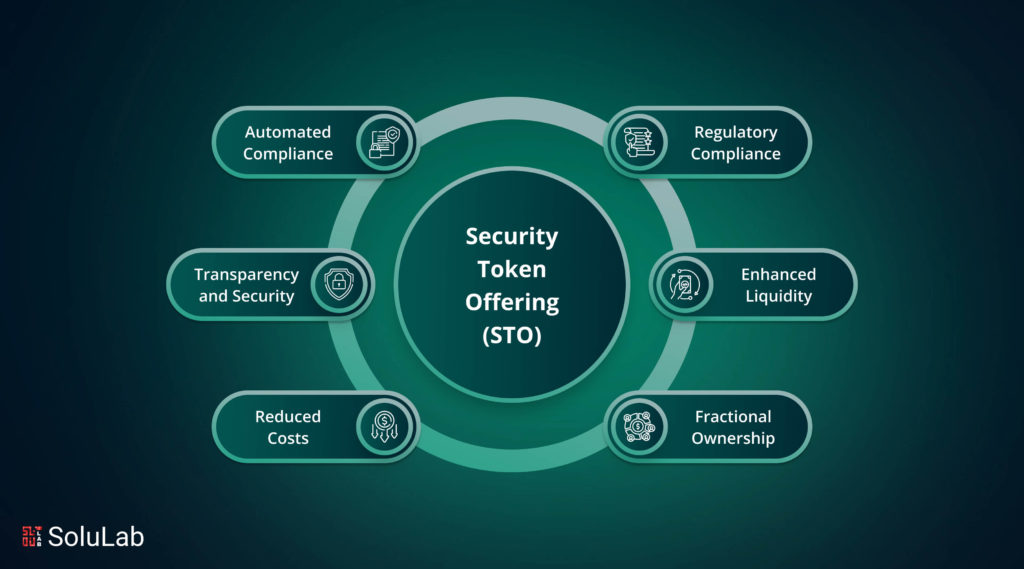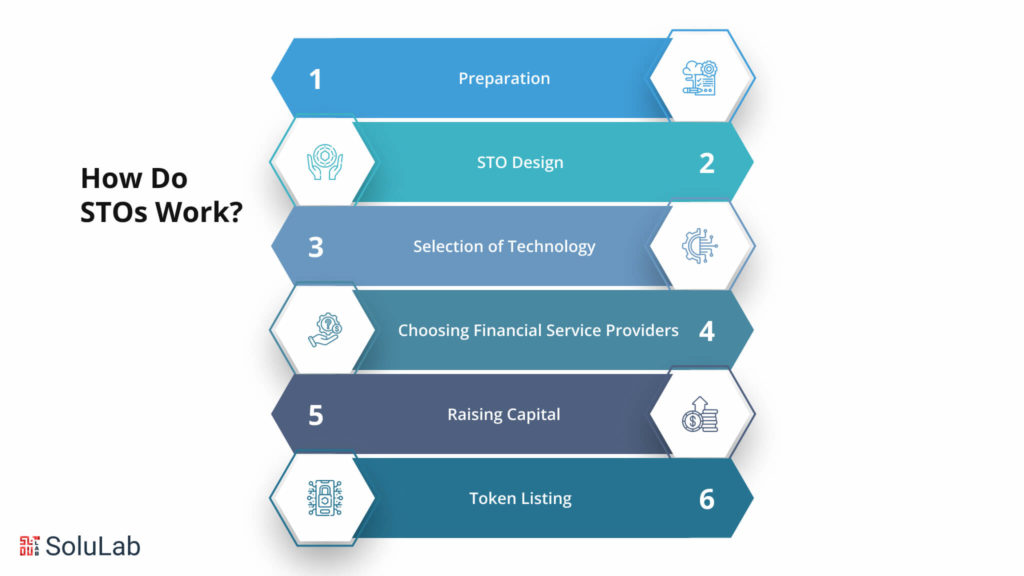
Traditional real-world assets are devoid of a number of characteristics, including liquidity, divisibility, and accessibility. certain factors make certain asset classes less popular with individual investors and inappropriate for short-term trading.
Finding a possible buyer or seller within a budget is a tedious step in the buying and selling process for illiquid assets like real estate. After that, there is a drawn-out registration process, broker fees, and other costs that the buyer or seller must pay.
In this case, security tokens seem to be an innovative solution for each of these issues with conventional assets. These digital tokens give consumers better accessibility, a quicker settlement time, and increased asset liquidity.
Token investors feel more confident when government agencies are involved and adhere to stringent regulations. Because of this, it is anticipated that by 2030, the trading volume of security tokens will increase by more than $162 trillion.
In this blog, we will get to know everything about Security Token Offerings (STOs) and analyze the idea of security tokens. So, without any further ado, let’s get started!
What are Security Tokens offerings?
Security Token Offerings (STOs) are a method of fundraising where companies issue digital tokens, representing ownership in assets or a company, on a blockchain, similar to Initial Public Offerings (IPOs) but with the added benefits of blockchain technology.
STOs are comparable to initial coin offerings (ICOs), but the tokens issued in an STO are regarded as securities and are governed by financial authorities, meaning that they are intended to offer the same protections as conventional securities, like stocks and bonds.
Benefits of Security Tokens Offerings
Security tokens are digital assets that represent ownership or other rights in an asset, such as equity, real estate, or other forms of investment. These tokens are created through a process known as a Security Token Offering (STO), which provides a regulated and secure way to raise capital. Here are some of the key benefits of security tokens:
1. Regulatory Compliance
Security tokens are issued in compliance with regulatory frameworks, ensuring that the offerings adhere to legal standards. This compliance reduces the risk of legal issues and provides a level of trust and security for investors.
2. Enhanced Liquidity
Security tokens can be traded on various security token offering platforms, providing enhanced liquidity compared to traditional assets. This increased liquidity makes it easier for investors to buy and sell tokens, creating a more dynamic and accessible market.
3. Fractional Ownership
Security tokens allow for fractional ownership of high-value assets. This means that investors can purchase small fractions of expensive assets, such as real estate or fine art, making it easier for more people to invest in these markets.
4. Reduced Costs
The use of blockchain technology in security token offerings can significantly reduce the costs associated with issuing and trading securities. This includes lower transaction fees, reduced paperwork, and decreased administrative costs.
5. Transparency and Security
Blockchain technology provides a transparent and immutable ledger of all transactions. This transparency enhances security and trust, as investors can verify the authenticity and history of the tokens they are purchasing.
6. Global Access
Security token offerings provide global access to investment opportunities. Investors from around the world can participate in STOs, broadening the investor base and increasing the potential for raising capital.
7. Automated Compliance
Smart contracts can automate compliance processes, ensuring that all transactions meet regulatory requirements. This automation reduces the risk of human error and increases the efficiency of the compliance process.
8. Increased Market Efficiency
The tokenization of assets can lead to more efficient markets by reducing the barriers to entry and enabling faster and more secure transactions. This efficiency benefits both issuers and investors.
9. Diversification Opportunities
Investors can diversify their portfolios by investing in a wide range of tokenized assets. This diversification can help mitigate risk and increase potential returns.
10. Security Token Offering Services
Utilizing professional security token offering services ensures that the entire process of issuing and managing security tokens is handled by experts. These services include legal compliance, token issuance, marketing, and post-offering support.
Types of Security Tokens Offerings
There are three kinds of security tokens:
- Asset-backed tokens
- Equity tokens
- Debt tokens
1. Aset-backed Tokens
Real-world assets including commodities, precious metals, or real estate are represented by asset-backed tokens. Depending on the asset it signifies, the token’s price changes in real-time. Investors may use these security tokens to use a variety of asset types to diversify their portfolios. You may divide your money, for instance, and put it into gold, silver, or oil tokens.
2. Equity Tokens
Equity tokens, as the name suggests, are shares of a publicly traded firm. To own a portion of businesses worth at billions or trillions of dollars, you may purchase these security tokens. In contrast to conventional stock exchanges, as soon as your payment is verified, the assets will be registered in your name on the blockchain. Additionally, firms can obtain money to grow their operations by selling equity tokens.
Related: Top 10 STO Development Companies
3. Debt Tokens
Security tokens known as “debt tokens” stand as substitutes for loans made by investors to businesses. In this case, the investor gets paid interest or a dividend in line with the amount given. Regarding these tokens, the borrower and lender have mutually decided upon the interest rate, interest payout schedule, and other relevant terms and conditions. Purchasers of security tokens also have the choice to select tokens with the best interest rate and features, such as daily interest distributions.
Security Tokens vs. Utility Tokens
Here are the differences between security tokens and utility tokens:
| Criteria | Security Tokens | Utility Tokens |
| Definition | Signify ownership stakes in real-world assets | Grant access to specific features within a platform |
| Investment | Investors expect returns based on the asset’s performance | Value is derived from their utility within the platform |
| Regulation | Governed by securities regulations, such as STOs | Regulatory status is often ambiguous and unclear |
| Legal Rights | Provide holders with legal rights, including voting and profit-sharing | Offer access rights and limited governance |
| Stability | Generally more stable and less speculative in value | Typically more speculative, influenced by market demand |
| Underlying Asset | Supported by tangible assets with intrinsic value | Value comes from their utility within the platform |
| Issuance | Issued through regulated processes like STOs | Commonly created through ICOs or TGEs |
STO vs. ICO: Understanding the Differences
In the world of blockchain and cryptocurrency, Security Token Offerings (STOs) and Initial Coin Offerings (ICOs) are two prominent fundraising methods. While both are used to raise capital for blockchain projects, they have distinct differences in terms of regulatory compliance, investor protection, and the nature of the tokens offered. Here’s a detailed comparison of STOs and ICOs:
Security Token Offerings (STOs)
1. Regulatory Compliance: STOs are regulated by financial authorities and must comply with securities laws. This ensures greater transparency and legal protection for investors.
2. Investor Protection: Due to regulatory oversight, STOs offer enhanced security and protection for investors, reducing the risk of fraud and scams.
3. Token Type: Security tokens represent ownership in an asset, such as equity, debt, or real estate. They often come with rights to dividends, profit sharing, or voting.
4. Market Accessibility: STOs are generally more attractive to institutional investors due to regulatory compliance and perceived security, but this can also mean higher barriers to entry for smaller investors.
5. Fundraising Process: The process of launching an ICO involves significant legal and regulatory preparations, making it more complex and costly compared to an ICO.
6. Secondary Market: Security tokens can be traded on regulated exchanges, providing liquidity to investors, but this trading is subject to regulatory oversight.
Initial Coin Offerings (ICOs)
1. Regulatory Environment: ICOs operate in a relatively unregulated environment, which allows for quicker and simpler fundraising but comes with higher risks of legal issues and regulatory crackdowns.
2. Investor Risk: The lack of regulation in ICOs means there is less protection for investors, increasing the potential for fraud and scams.
3. Token Type: ICOs typically offer utility tokens, which provide access to a product or service within a blockchain ecosystem but do not represent ownership or investment in an asset.
4. Market Accessibility: ICOs are generally accessible to a wider range of investors, including retail investors, due to lower entry barriers and fewer regulatory requirements.
5. Fundraising Process: Launching an ICO is relatively straightforward and less expensive, involving the creation of a whitepaper and a token sale to raise funds.
6. Secondary Market: Utility tokens can be traded on cryptocurrency exchanges, providing liquidity, but these markets are often less regulated and more volatile than traditional securities markets.
Choosing between an STO and an ICO depends on various factors, including the nature of the project, regulatory considerations, and the target investor base. STOs offer greater regulatory compliance and investor protection, making them suitable for projects seeking institutional investment and long-term sustainability. ICOs, on the other hand, provide a faster and more accessible fundraising route, ideal for projects looking to quickly raise capital and reach a broad audience. Understanding these differences is crucial for both project creators and investors to make informed decisions to choose the best security token in blockchain technology.
What Qualifies As A Security? Howey Test Explanation
Tokenizing assets on the blockchain results in security tokens. However, what exactly do you view as security in the first place?
Generally, a set of legal standards and guidelines are used to determine if an asset meets the requirements to be classified as a security. This is especially true in the US within the Securities Act of 1933. The “Howey Test,” which was developed by the US Supreme Court in the famous 1946 case of SEC v. W.J. Howey Co., is the one that is most frequently used.
The Howey Test states that an asset is deemed a security if it satisfies the following requirements:
- Investment of Money: Either money or another concrete or measurable item (like goods or services) is invested.
- Common Enterprise: The investment has been made in a “common enterprise.” This typically indicates a relationship between the promoter’s and investors’ fortunes.
- Expectation of Profit: Investors anticipate making money on their investments.
- Efforts of Others: It is anticipated that the income would mostly originate from the labor of others. This usually indicates that the investor is depending on the management work or industry knowledge of an outsider, such as a promoter or business.
How Do STOs Work?

Launching a Security Token Offering (STO) involves a series of steps, broadly divided into six phases:
1. Preparation
The initial stage of an STO involves conceptual development and the selection of underlying assets. At this stage, a core team is formed, and advisors are appointed. The project’s whitepaper is drafted, detailing the chosen technologies and service providers. Capital requirements are assessed, and the target investor base is identified.
2. STO Design
During this phase, a corporate finance advisor is brought on board to determine the type of security, its structure, the duration of the offering, and valuations related to token issuance. A legal advisor is also appointed to manage investor requirements and regulatory compliance. Lockup periods for the tokens are set, and initial documentation, including a term sheet, is prepared.
3. Selection of Technology
The technical team selects a blockchain platform suitable for the project. A technology service provider is engaged to create the necessary digital security tokens. This provider also offers features for investors to complete their KYC/AML verification and provides a portal that supports crypto wallets.
4. Choosing Financial Service Providers
A reliable broker is appointed to manage the sale of securities, while a custodian is selected for safekeeping purposes. Transfer agents are onboarded to oversee the token issuance, and payment providers are chosen to support payment-related services during the capital-raising process.
5. Raising Capital
The project’s offering documents are shared with potential investors for review. Online marketing activities, including social media campaigns, promote the upcoming STO. Interested initial investors sign the offering documents and transfer funds to the issuer. Once this is complete, investors receive tokens in their wallets.
6. Token Listing
Token listing involves adding tokens to an exchange or trading platform. Token issuers complete the necessary documentation with the respective exchanges. A market maker is appointed to provide liquidity for the listed security tokens, ensuring a smooth trading experience for investors. Token issuers are also required to regularly publish reports to keep investors informed about the firm’s progress.
Read Also: ICO Vs IPO
How To Participate In An STO? A Step-By-Step Guide
Purchasing securities is subject to legal restrictions and involves risk. Consult an authorized financial advisor before making investments.
In four easy steps, you may possibly participate in STO:
1. Find the Right STO for You
Investigate sites such as Securitize or STOmarket to find STOs in different sectors.
Importantly, don’t take shortcuts! Research the STO thoroughly:
- Project Details: Read the whitepaper to understand the project’s goals, the underlying asset, and the token’s utility.
- Team Expertise: Examine the history and experience of the team in related domains.
- Token Economics: Examine the token supply, distribution strategy, and possible profits in token economics.
- Underlying Asset: For asset-backed tokens, understand the asset’s value and potential risks.
- Seek Guidance: Seek Guidance: To get a second perspective, think about speaking with a financial advisor who specializes in STOs.
2. Register on a Regulated Platform
Look for a platform with a good reputation that hosts the STO you’re interested in. You may compile a list of security token issuing platforms with the use of a website such as The Tokenizer. After locating a platform, finish the registration procedure by giving personal details and accepting the rules. It is required to undergo AML (Anti-Money Laundering) and KYC (Know Your Customer) checks.
3. Fund Your Account
Platforms typically support either fiat currencies (USD, EUR) or cryptocurrencies (ETH, BTC). Check the platform’s options before committing.
Transfer the necessary funds into your platform account based on the STO’s minimum investment amount.
4. Invest in the STO and Receive Your Tokens
When the STO goes live, use the funds in your account to purchase the desired amount of security tokens.
The security tokens will be placed into your platform wallet or an external cryptocurrency wallet that is compatible when your transaction is successful.
Conclusion
Security Token Offerings (STOs) represent a revolutionary approach to raising capital by leveraging blockchain technology to create compliant, secure, and transparent investment opportunities. Unlike traditional fundraising methods, STOs offer numerous advantages, including enhanced liquidity, reduced costs, and global access to a diverse investor base. By providing a regulated and efficient means of investing in a wide array of asset classes, STOs are reshaping the financial landscape and paving the way for more inclusive and accessible investment opportunities.
However, launching an STO is not without its challenges. Navigating the complex regulatory challenges, ensuring robust security measures, and managing the technical intricacies of blockchain technology can be daunting. This is where SoluLab steps in. As a leading STO development company, SoluLab offers comprehensive services to guide you through every phase of your STO journey. From conceptualization and compliance to token issuance and post-offering support, our team of experts ensures a seamless and successful STO launch. Contact us today to learn how SoluLab can help you utilize the full potential of security token offerings.
FAQs
1. What is the difference between an STO and an ICO?
An STO (Security Token Offering) involves issuing tokens that are backed by real assets, such as equity, debt, or real estate and are regulated by securities laws. This offers greater investor protection and transparency. An ICO (Initial Coin Offering), on the other hand, typically issues utility tokens that provide access to a product or service within a blockchain ecosystem and operate in a less regulated environment, which can lead to higher risks of fraud and scams.
2. How can I find reliable STOs to invest in?
To find reliable STOs, explore reputable platforms like STOmarket or Securitize, which list STOs across various industries. Thoroughly research each STO by reading the whitepaper, understanding the project’s goals and underlying assets, analyzing the token economics, and evaluating the team’s expertise. Consulting a financial advisor with experience in STOs can also provide valuable insights.
3. What are the steps involved in registering on an STO platform?
The registration process on an STO platform typically involves finding a platform with a good reputation, completing the registration by providing personal information, and agreeing to the platform’s terms. You will need to undergo KYC (Know Your Customer) and AML (Anti-Money Laundering) checks, which require submitting your government ID, proof of address, and other necessary documentation.
4. What types of currencies can I use to fund my STO investment?
Most STO platforms support funding through both fiat currencies (like USD or EUR) and cryptocurrencies (such as ETH or BTC). It’s important to check the specific platform’s supported currencies and funding options before committing to an investment. Ensure you have the necessary funds available in your platform account based on the STO’s minimum investment amount.
5. How do I receive my security tokens after investing in an STO?
Once the STO goes live and you have used the funds in your account to purchase the desired amount of security tokens, the tokens will be deposited into your platform wallet. Some platforms may also allow you to transfer the tokens to a compatible external crypto wallet for added security and flexibility. Make sure to follow the platform’s guidelines for storing and managing your security tokens.






